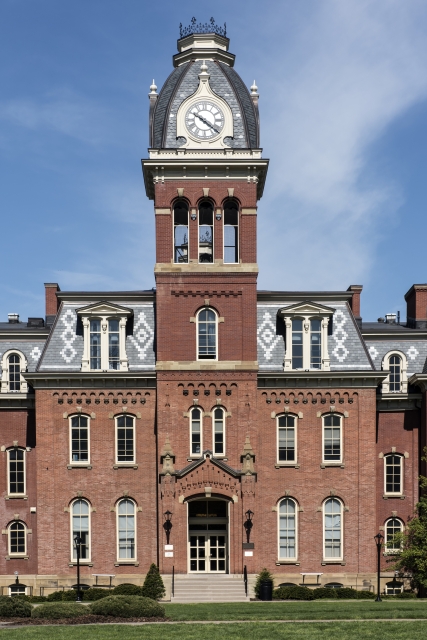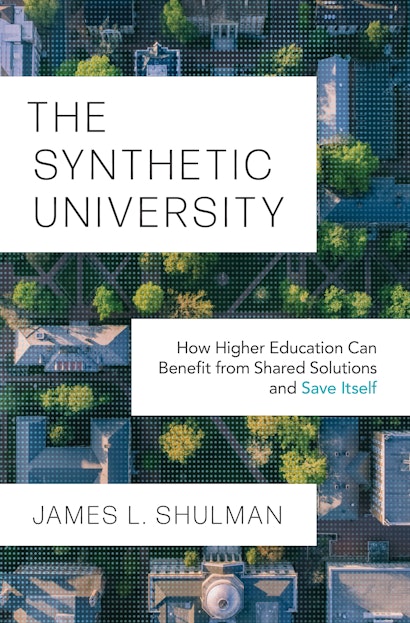In September 2023, the Trustees of West Virginia’s flagship public university voted to eliminate 143 faculty positions and 28 programs, including all foreign language programs and math graduate programs. When asked about the elimination of all foreign language programs, West Virginia University (WVU) associate provost Mark Gavin replied that WVU would still provide language instruction, according to the Chronicle of Higher Education:
Asked whether students would receive the same level of education if WVU joins forces virtually with a Big 12 university or an app, Gavin said that “it remains to be seen,” adding that West Virginia is “committed to finding ways to deliver a quality opportunity, and I think we can do it.” He noted that those two options are not the only ones the university will explore, and that WVU has not started pursuing them in earnest.
The crisis in college costs did not appear like a spaceship out of the blue. Are we really so unprepared for changing the cost structure of colleges and universities that a flagship public university can slash entire departments and announce that they will only now begin to pursue alternative ways of serving their students and their state?
In 1968, economist Bill Bowen argued that the labor-intensive core functions of higher education, primarily the work of faculty, will not benefit from the same productivity increases as those industries in which technology can continually improve operations—for example, by automating assembly lines in factories. According to Bowen, the “cost disease” of such labor-intensive industries explains why the cost of what colleges do—and subsequently, tuition—will grow consistently, and consistently faster, than the general level of inflation. When I first read this article in 1987, I understood that televisions will get better and cheaper but a year of college (for which my family had just managed to pay $19,000) was eventually going to cost me something like $74,000 a year if I were to have a child when I was 35 years old.
Thirty years later, in 2018, my first daughter entered college; because she went to a private college, her first year of college did in fact cost us $73,000. Let’s look ahead again. I don’t need a crystal ball; I have a spreadsheet. Given the predictability of compounding increases, if my daughter has a child at age 35, that child’s first-year tuition and fees will be $289,000.
How have we been so powerless to avoid this predictable and increasingly untenable fate concerning the cost of educating college students?
The reasons for rising costs (not the price, but the costs) has been long understood: these include high expectations from society for colleges and universities to support everything from basic and applied research in science, medicine, and engineering to sports and arts entertainment; from adhering to government regulations of various kinds to preparing students for every imaginable career. And when an institution has talented faculty and staff, they will generate many good ideas to fund in response to these needs.
For some institutions, these growing array of costs in the end of the 20th century were covered by enterprising approaches: commercializing products by becoming intertwined with industry partners, managing endowment funds in more sophisticated ways, and relentlessly raising money from alumni. For others, state governments provided subsidies out of recognition that public education is a public good which serves the state in manifold ways. But the costs continued to grow and, subsequently, so did tuition. In 2008–2009, the housing bubble burst; as a result, families realized that their home ownership was not a continually growing source of wealth that could either be called upon to pay tuition or to repay loans. At the same time, state governments were facing significant Medicaid costs and decreased their subsidies for public colleges and universities. Prices to students and families continually rose; not surprisingly, the public’s faith in higher education began to decline; rapidly. In a 2013 Gallup poll, 74 percent of people aged 18–29 thought that college was “very important.” By 2019, only 41 percent did.
The fate of cumulative increases in college costs—so long foreseen—is playing out as predicted. Everyone agrees that it can’t continue to go on like this—and not just students and families. I work with faculty, deans, and university staff every day and only a rare few have their heads in the sand. Many of them are eager to work for change, but the system seems insidiously designed to resist efforts at change. What makes it so difficult for colleges to control costs?
Working under a rare degree of academic freedom and with a 100 year old ethos of institutional autonomy that has its roots in the physical isolation colleges gained as they dotted the wide expanses of a large North American landmass, US faculty and staff are extraordinarily inventive when taking on any problem—be it academic or administrative. To support this inventiveness, schools compete for students, faculty, donors, grants, attention, rankings—basically everything. This market-driven competition drives productive creativity.
But as non-profit institutions, colleges lack the market-clearing mechanisms that test and often shut off ongoing investment in creative efforts in the for-profit sector. Venture capitalists, investment banks, and (in the public markets) shareholders determine which ideas and products should be supported and which should be starved or shut down. But colleges and universities compete on all fronts, with no end in sight.
These important institutions are market-driven enough to invest in their creative local solutions to every challenge, but not market-disciplined by the market’s savage reliance on the bottom-line. It’s tricky; being mission-driven makes it difficult to distinguish a mission good that deserves subsidy within an institution from one that doesn’t.
So, what’s to be done? First, many colleagues believe (as do I) that the federal and state governments should dramatically increase their support for higher education. But as much as we wish for this, it just isn’t happening. Second, voluntary inter-institutional collaboration is a fiction. There are exceptions, but for the most part, it is in the nature of faculty, staff, and administrators to seek to distinguish themselves from their peers in other institutions. Distinction feeds competition, not collaboration.
If both magical subsidy and generous collaborative efforts are unlikely, the future requires cost reduction. It is much more fun to imagine and plan for increased revenue than to reduce costs. And of course, cost reductions of various kinds have been happening. Colleges have been squeezed and have been acting responsibly for decades but they need to be able to call on shared, mission-supporting collective action. Otherwise, they turn to brutal and mission-sacrificing approaches like those chosen by West Virginia University. If the goal is to turn colleges and universities into completely market-driven firms that are guided by quarterly profit reports, we as a country will get what we deserve.
In The Synthetic University I argue for an alternative to the existing dominant model of do-it-yourself institutional behavior. But I don’t think that the answer is to turn everything over to the market, where profit-maximizing vendors are more than ready to offer interventions that can accelerate institutional change but without regard for the well-being of the host institutions. I write about a narrow path: effective synthesis begins with an outside organization that is staffed by people—institutional entrepreneurs—who understand and respect the myths that undergird the daily behavior of those who work on college campuses.
While many Americans have grown increasingly skeptical of many or all institutions, some of us continue to believe that higher education is needed more than ever. A synthetic approach requires not only acknowledging the truth about where college costs are going but also the dedication to not be resigned to what might seem like an inescapable fate.
James L. Shulman is vice president and chief operating officer of the American Council of Learned Societies. He collaborated with William G. Bowen and Derek Bok on The Shape of the River: Long-Term Consequences of Considering Race in College and University Admissions and is the author (with William G. Bowen) of The Game of Life: College Sports and Educational Values (both Princeton).

